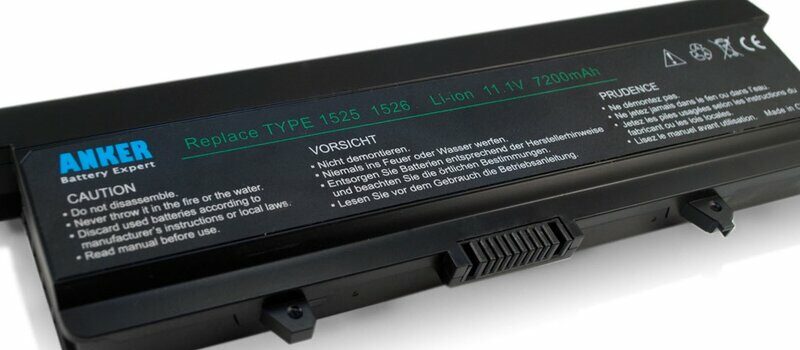A laptop unexpectedly shutting down without saving is everyone’s worst nightmare. A worn-out or dead battery may cause an annoying inconvenience for your work or study. Having adequate knowledge of your cell could be of great use to keep such inconveniences at bay.
This article provides a list of laptop battery frequently asked questions and answers to help resolve the issues. Let’s check out what you can do to deal with a damaged cell, preserve your laptop, and other do’s and don’ts.
Q1: How To Check The Health Of My Laptop Battery?
You can export an HTML report with cell consumption data with a few simple keystrokes. If you are using Windows 7 or above, the guide is right below.
- Press Windows + Q or click on the Windows icon on the corner of your screen, then type “PowerShell” and press Enter.
- Once the blue PowerShell box, copy and paste “powercfg /batteryreport.”
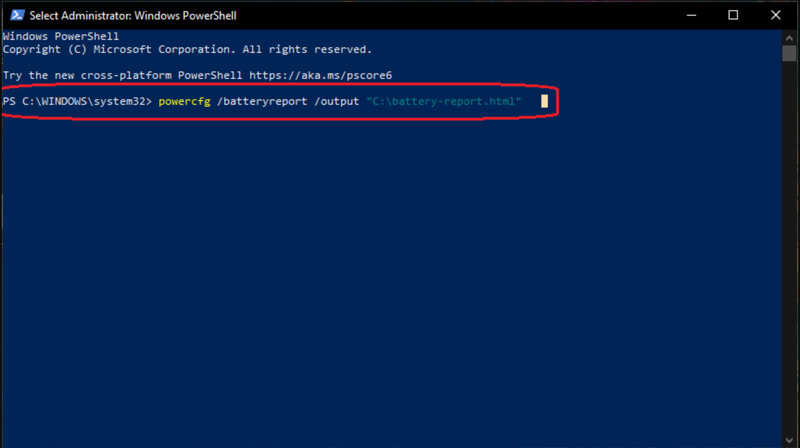
- Head to the folder “Users/[Your Username]” or do a quick search (by pressing Windows + Q). Then search for the “battery-report.html.”
From the report, you can see details about the condition of your laptop battery. The document also includes estimated capacity and full-cycle count. They are the key factors determining the health of your battery.
Q2: What Makes Your Battery Go Bad?
This is one of the laptop battery frequently asked questions. Three universal causes that exhaust your cell include heat, bloatware, and low charge. “Laptop” is just a name, and in no way should you put the device on your lap or any uneven surface.
Doing this may obstruct its vents and damage the cell in the long run. Unnecessary bloatware in the background can deplete the power supply of your device. Remember to remove these applications now and then to save your cell from draining.
Last but not least, never let your energy level drop below 10%. A low-charge cell can be harmful not to the cell itself but also to the surrounding hardware like CPU or processor chip. It is advisable to have your charger plugged in at the energy range of 20-40%.
Q3: When Should I Get A New Battery?
Batteries of laptops are usually in their prime for the first 400-500 charge cycles, equivalent to 1-2 years, depending on the usage level. After that, they will start to age and gradually lose their ability to produce steady power.
When your 5-year-old device shuts down without warning but the bar says 59%, it is a sign that your cell needs replacing. The component has reached the end of its useful life. It is unable to consistently deliver the required power, causing the system to crash.
Q4: Is It Harmful To Have My Laptop Plugged In Day And Night?
Theoretically, it is OK to leave the charger plugged in after your device has fully charged. Most manufacturers equip their lithium-based cells with protection circuits that will prevent overcharging.
However, it is worth mentioning that the constant charging process may produce an excessive amount of heat. It is worse when you are both charging and using multiple applications at the same time.
The pressure from high voltage combined with extreme heat would be a destructive combo for the wellness of your device’s cell.
Q5: How Do I Improve The Slow Charging Issue?
First, please check if you plug in a compatible charger correctly. If the charging speed still has not improved, cell calibration could be the ideal solution for this kind of issue.
- Use up the battery.
- Switch off the laptop and charge it for roughly a few hours longer than the regular charging time.
- Turn on your device to see if the battery is 100% full.
- Find the Power Options. Open “Control Panel > Hardware and Sound > Power Options > Edit Plan Settings.”
- Opt for “Change advanced power settings.” And a window with options to customize your power plan will appear on the screen.
- Configure your laptop to sleep automatically when the cell is lower than 10% in the Battery category. (The exact number is up to your choice.)
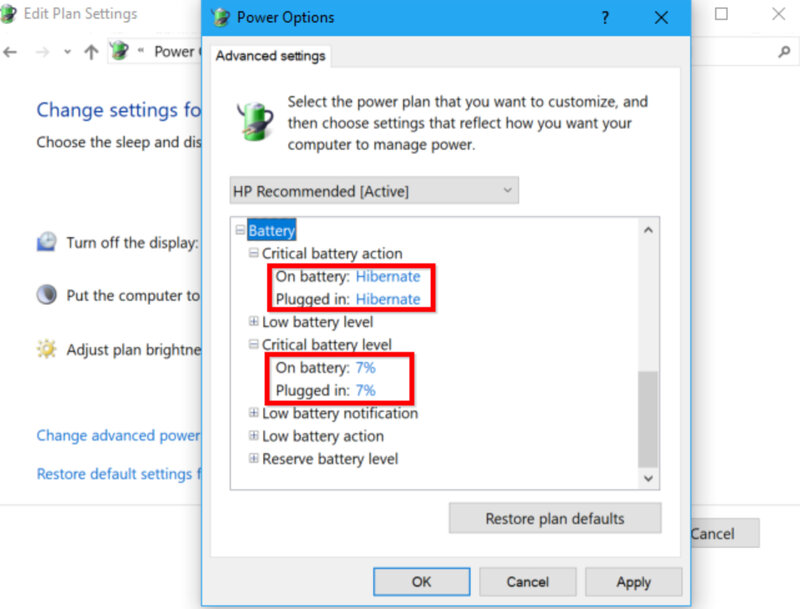
- Unplug the charger and discharge your laptop until the device goes to sleep automatically.
Follow this practice and wait for the issue to vanish.
Q6: How Do I Fix Ac Adapter Issues?
If the charger stops working, you can try updating drivers before taking your device to a technician.
1. Launch “Control Panel > Hardware and Sound”
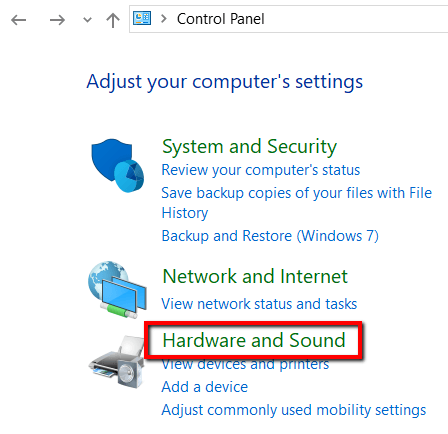
2. Look for “Devices and Printers,” and open “Device Manager > Batteries.”

3. Right-click on “Microsoft AC Adapter” and choose “Update driver.”
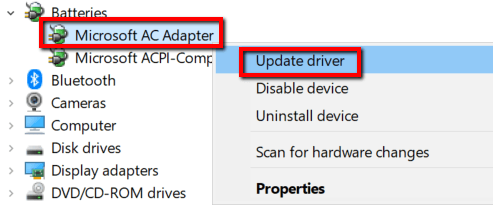
4. Repeat the updating task with “Microsoft ACPI-Compliant Control Method Battery.”
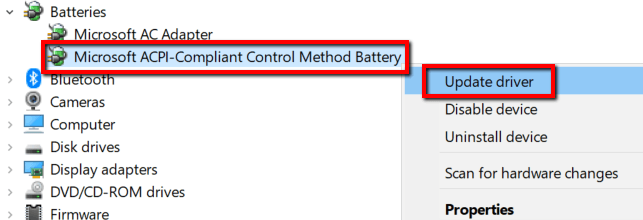
5. After the update processes are complete, restart your device and connect the AC adapter.
Q7: Is It Possible To Use My Laptop Without The Battery?
Yes, most laptops work perfectly without a cell. To use a laptop without a battery, you need to connect the device to a power source, as you would do with PCs. When unplugged, the device will switch off.
On a side note, it is best to remove the malfunctioning cell while running your laptop, even though the cell is already depleted and not working. Doing this may help you avoid any potential risks from a faulty cell.
Q8: What Are The Ways To Keep The Cell In Good Condition?
Externally, try your best to keep your device in a cool, dry place to prevent overheating. You can also remove unused devices like webcams or headphones to release stress on the power supply.
The 40-80 rule is an excellent strategy to lengthen cell life. It means you should charge the cell when it’s at 40% and unplug once the meter reaches 80%. The strategy aims at minimizing the full-charge cycles, thus increasing the lifespan of your cell.
Conclusion
Batteries of all kinds are usually short-lived and prone to damage. Hopefully, our article on laptop battery frequently asked questions can help take good care of your laptop power supply. Should you have further questions, please feel free to let us know.
Thank you for reading!

Paul Sullivan is the leading writer for articles on our website. He has over 10 years of experience as a technology reviewer, especially on laptops and computers.
With his long experience, we believe that he will bring you accurate and valuable knowledge and assessment.

